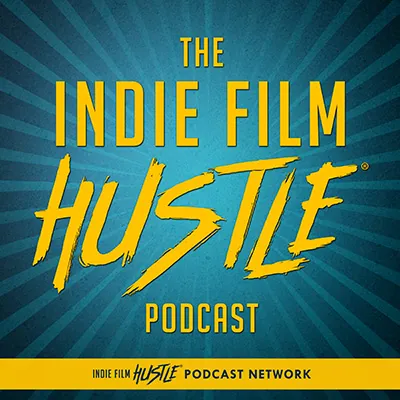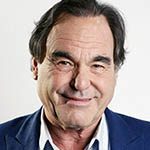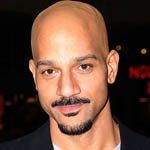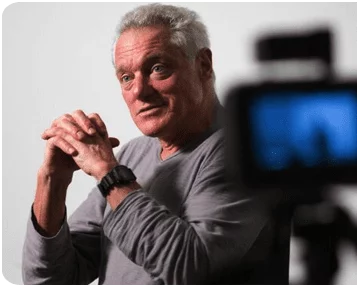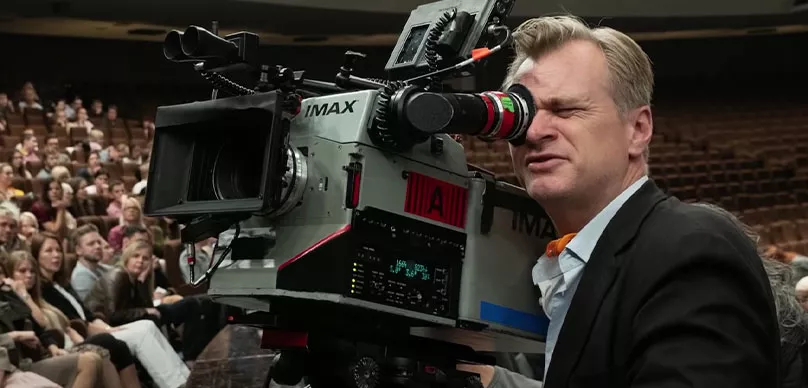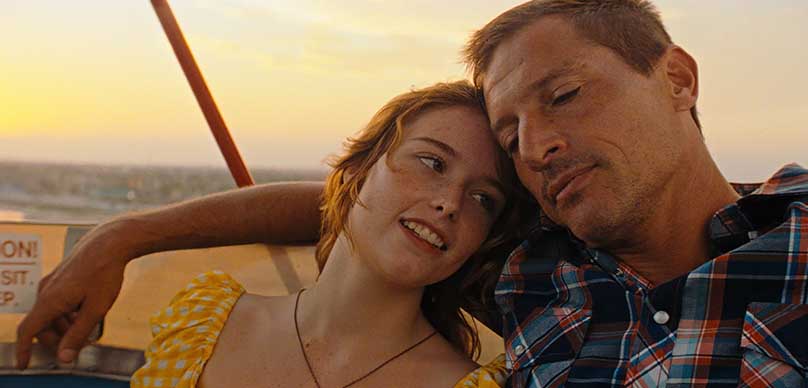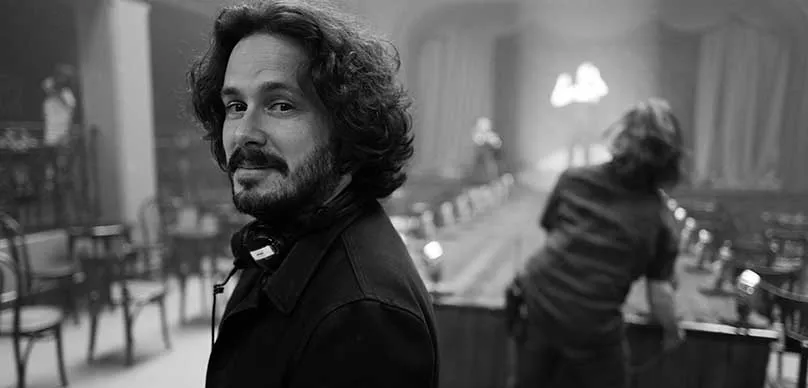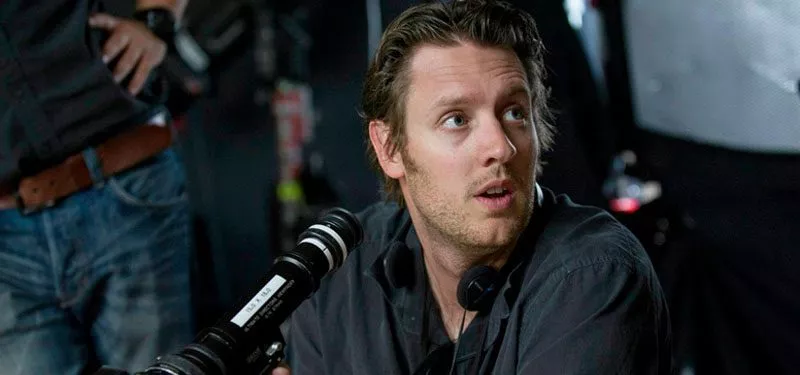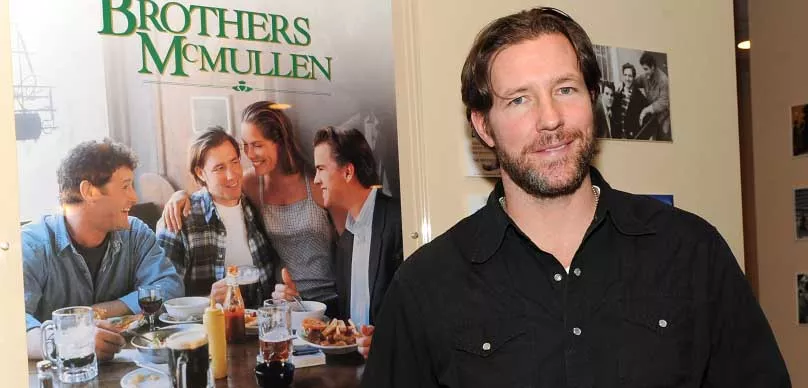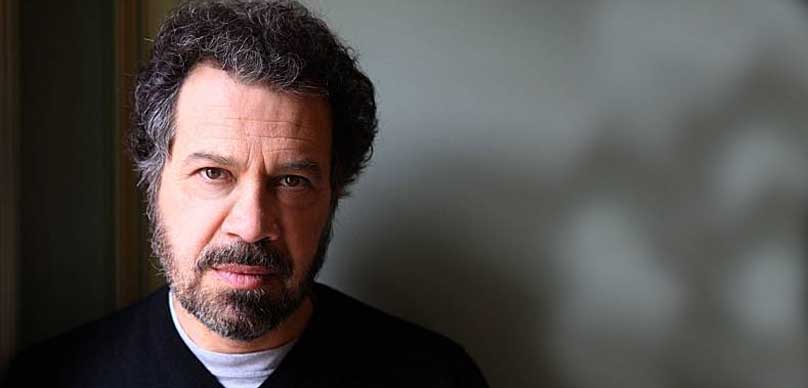So you want to make music videos. Want to follow in the footsteps of David Fincher, Mark Romanek and Spike Jonez? It’s not a bad plan at all. Many filmmakers start off in music videos. It’s a great place to get experience, learn the tools and experiment.
I’ve directed a few music videos in my day and have worked in some capacity on hundreds over the years. I wanted to do an episode where I breakdown my process for making a music video. The music video in question is for the band Ozomatli and the stand up comic Gabriel Iglesias aka Fluffy.
Gab and I have done a few projects together over the years, two of which were music videos, Hey It’s Fluffy and Stand Up Revolution.
I had an absolute ball shooting both. Today we will be dissecting Stand Up Revolution, which was for his Comedy Central show “Gabriel Iglesias Presents: Stand-Up Revolution.” It was a large production for me and I learned a ton.
Check out the final product and the behind the scenes video for Stand Up Revolution.
I breakdown the process of making the music video and discuss the dark side of music videos…the business!
I had an amazing experience working with Gabriel Iglesias and Ozomatli and my discussion on the dark side has nothing to do with them. I wanted to open the eyes of young filmmakers who are just starting out and want to go into making music videos for a living.
Listen to my experience on the “business side” of music videos and then make up your mind. I’m not trying to scare you but filmmakers should know what they are getting into and set expectations accordingly.
If I may quote Terence Howard from one of my favorite flicks Hustle and Flow:
“It’s tough out here for a pimp.”
I hope this teaches a bit about how to make a music video. Take a listen to the podcast and let me know what you think in the comments below.
Right-click here to download the MP3
Alex Ferrari 0:52
Now I know this is indie film hustle, but a lot of filmmakers start off in music videos, David Fincher Michael Bay, Ridley Scott, a few a bunch of other people started on commercials and music videos. And I think it's a great a great tool, a great place to learn, experiment and grow as a filmmaker. So I've shot a few music videos in my day, not a lot, but I have worked on Gosh, probably hundreds of music videos with some of the biggest artists in the world. But I did direct a music video with for a band called Ozomatli, a Grammy Award winning band also motley and the stand up comedian Gabriel Iglesias as also known as fluffy. I did two videos for them for Comedy Central. And the second video is called Stand Up Revolution. And that's the one we're going to be concentrating on today. It was a very, very big budget. Well, not big budget, I mean, but it was a bit it was the biggest budget I've ever worked on. And it was a pretty large brought up large production. So I wanted to kind of break down the process a little bit. At least my process is not the ultimate process. This is just my process of how I shot the music, video, my experiences with it, and so on. So before you finish listening to this, it really would be helpful for you to watch the music video that I have in the show notes. If you're in a car and you can't see it, it's all good, you can watch it afterwards. So first thing I do when I get a song, when I get a music video gig is listen to the song, listen to it, probably about 2030 time to just have it on repeat constantly, constantly just listen to it. And then as things start, as ideas start coming up, images start coming up, I started jotting them down, I start figuring out concepts and start putting it all together. And since of my mind as an editor, it is easy for me to kind of put things together in that fashion. So I started thinking about ideas and I knew the budget was going to be a little bit larger than our last budget. So I came up with this grand idea of you know, visual effects, there's going to be bomber planes, there's gonna be a huge warehouse, it was going to be 1000s of extras digital, and it was just going to be this massive thing because it was a revolution was called Stand Up Revolution. So Gabe, you know, saw my initial concept and he's like, you know, Alex, I really love it a lot, but I don't think we can afford this. So we kind of toned it down. So Gabe gave me the idea. He's like, Look, I want to shoot it at the Roxy. And now the Roxy for those who don't know is a legendary club here on the Sunset Strip in Los Angeles. So I was like he's like just make it around the Roxy and let's come up with a concept around the Roxy. I'm like Okay, so now I had my location. So that made it a little easier. So then I just started building up this whole story around gay plane playing a ballet, and then the Kardashians come up and they kidnap the kind of kidnap the Kardashians and take their place to go into this red carpet to go into the show to see Ozomatli. And it's this whole kind of surreal thing. So then Gabe, and his main man, Martine are dressed up as Kardashians, which you haven't seen the video yet. You're missing out. They are quite sexy men. Now I know a lot of people, a lot of directors like the storyboard says I'm not an artist and I am kind of a perfectionist. I don't like storyboarding, unless I have someone who will do the storyboarding for us. For me. At this point I didn't on my film broken I storyboarded everything as the book that I released called the art of broken definitely shows. So I do like storyboarding, but for music videos. Generally there's not enough budget to do storyboarding. So what I like to do is shortlist so I actually shot list everything out very detailed and very organized. And generally I'll have a shot list of let's say 20 shots for a scene, which will then be pared down to probably about 10 shots and we might shoot eight because that's just the way the cookie crumbles. So I always kind of shoot for the stars and then just start paring things back little by little as the day goes on. So like I said before, our location was the Roxy which had its own unique challenges. Working in a kind of legendary, legendary club But they were wonderful to work with. And always, you know, wherever your locations are, you know, I'm talking about, you know, a larger, bigger production kind of music videos and a lot of you out there are going to start doing low budget music videos. So you're going to kind of run a gun and you're going to do kind of guerilla filmmaking and that's good. That's perfectly fine. That's what I did and that's what I still do on many occasions. But this was kind of like the you know, for me at least it was kind of like a really kind of a Rolls Royce experience having everything you know there and legit. So, the equipment we used we used, we shot it on the red epic, I decided to shoot 4k because and I know if you guys have heard my don't why indie filmmakers should not shoot 4k episode, which has been the most controversial episode and the most listened to episode in the history of the show. I do love shooting 4k, I didn't shoot 5k because 5k was overkill. And also it just I the workflow at the time I didn't have the gear to really make the workflow run very smoothly. At the time I shot this probably a few years ago couple a couple years ago about three years ago or so. So we decided shoot 4k and we were gonna we're going to end up mastering the 1080 p anyway for broadcast. So it was perfectly fine. I got to recompose a lot of shots, because we shot 4k. And then we also used another beautiful piece of technology called the techno crane. Now if you guys as filmmakers ever get a chance to use a techno crane, please do so it is the most wonderful and beautiful piece of film gear I've ever played with in my life. It is it is an expensive piece of gear. You know it's what gets those really dynamic shots. Basically it's a crane that goes anywhere and does anything almost almost automatically so you can kind of just hover 30 feet right above the ground and then just swoop up and come down and the video that I did before with Gabe called Hey, it's fluffy. We shot an entire his entire backyard which was a big huge pool scene with a ton of people. I let I literally didn't move the camera off the crane, it just stayed on the crane, the entire shoot, we just kind of floated the camera round got all the sorts, I got so much coverage it was it was amazing. So I fell in love with it right away. So we had to have it for this one as well. So the techno crane was a wonderful experience. I'll put some links on in the show notes so you can kind of see what the techno crane is and the experience it is. So when filming a couple tips when filming a music video, make sure you record your production audio, you won't use your production audio, but it's wonderful and helpful for sinking when you're going to sync up the song to the footage so it's really helpful sometimes like in our case, we actually had some skits and some dialogue that was before and after and during the the music video so we actually needed to record a natural sound. Then we I did we had a few different setups on the music video we had the performance setup, which was the main setup of the band on the stage at the Roxy we had the skit out front of the of the Roxy which is Gabe and Martine doing some dialogue, kidnapping the Kardashians and coming out dressed as the Kardashians in drag. And then the red carpet scene as well that we had a huge red carpet scene with a bunch of celebrities walking by with a ton of extras. And then the crowd scene inside which was all there was like an actual little fight fun fight and scene of Gabe and Martine and in the in the front of the crowd and things like that. So a couple tips. As far as a crowd, when you hear crowd you're like oh my god, he must have had 100 people there. We did. And we had a we actually paid 20 actors 20 extras to be there. Anytime you're going to get extras. You know, it's great to hire your friends or bring your friends along and things like that. But being an extra is actually really tough work in the sense that you have to be there all day. And if you're not getting paid or you're getting paid a little bit and you're not a professional actor, or professional extra, it's difficult because you basically just have to be there all day waiting around doing things and a lot of times your friends will bail on you after a few hours because it's not as glamorous as it looks on television. So it is it is a tough job. So we actually made a conscious effort now we did have some friends and we did through extra friends in there. But generally I think about 15 or 20 extra that were there all day. My my amazing line producer Sean definitely helped out a lot. And by the way, if you're doing a music video, God, please find a producer. Find a line producer or a producer, unit production manager, someone who can help you if you're the director and you're going to try to produce this as well as direct and edit and cast and everything else. You're going to lose your mind depending obviously on the size of the of the project. But if you can't at all, even on the smallest budgets even on budgets that I had were, you know, 500 bucks or 1000 bucks to do a music video. always hire or try to find someone to take that off your plate as a director, because as a director, you have so much on your plate already tried to deal with locations, getting lunch, all that kind of stuff is really, really difficult to do. So I had a great line producer called Sean Newhouse His name's Sean Newhouse. Shout out to Sean. He's amazing. And I worked with him on multiple projects handful a project with him. And he is he was great, so invaluable. Without him, I couldn't have done it. And then I also hired a wonderful dp Ernesto, I'm not going to massacre his last name. But Ernesto who might be on the show in the coming weeks, I'm trying to get him on. He's a big time dp now. But our nestos wonderful. And he was he brought all his toys to play with his cameras and stuff like that. So it was a lot of fun to shoot with him. So find a good dp, find a good line producer. Those are two very key positions that you that you really need to find when shooting a music video. So anyway, to how I use these extras, we just kind of grouped them together and shot, specifically, you just fill the frame, all you have to do is fill the frame, if you can fill the frame, you're able to have the illusion that there's more people in the shot. So the same extra that we're using in this inside the club were the same extra that we were using outside the club when we were trying to do all the fun, all the photographers and all the crowds and the fans trying to get to the inside inside the bar, the exact same people, we just we change their clothes, change their hairstyles, and we're good to go. So you have to think about those kind of things. Because if not, it would have cost us a fortune even on a decent sized budget music video, it would have cost us a fortune to have 1500 people there because it's not only about 50 or 100 people it's about feeding those people housing those people you know bathroom breaks for those people bathrooms for those people, there's a lot of other things you think about like oh, I could get 100 people were like well there's a lot of other costs involved down the line. So always keep thinking a few steps ahead and not just thinking about what you can get right now which is what I talked about on another episode about post production workflow or don't hire a dp just because they have a camera, a red camera because they might you might have that camera now but working down going down the workflow pipeline might be a headache for you later or you might have not thought of things that cost you more later so free doesn't always mean free. I digress Sorry guys. So we shot this it was wonderful. We shot it all out in about 12 hours I think 1012 hours was a night shoot. So it was it was pretty exhausting. And then I basically brought it back in transcoded everything at the time, we did not have at least I didn't have options to edit this in raw so I transcoded everything using my Red Rocket and then edited in Final Cut seven, Final Cut Pro seven edited at all and then brought that EDL exported that EDL after I was done editing it export that EDL into DaVinci where the Vinci resolve which is my color suite that after that I colored it all in raw I reconnected the raw colored it and raw use the red RAW file to get some amazing looks I'm able to do things that I wouldn't have been able to do unless I would have shot a 4k raw perfect example if you notice towards the very end of the music video. There's I think the last shot right but the second to last shot is Gabe opening up the door. Well that is a that is a full I shot that full 4k I had to zoom in because I didn't have the time to get the coverage that I needed. So when I shot it I noticed that I didn't have any coverage with the door with with Gabe opening the door without showing them showing the audience the to kidnap Kardashians inside so I had no way to do it. So I wanted to do a little pop in so I popped in reframed it shot that I did a shot to them and then I cut back the game and then it worked perfectly. I would have not been able to do that if I wouldn't have shot in a 4k and 4k but would have shot that 2k or 1080 p i would have been in very big trouble I wouldn't have been able to finish off the shot the way I want it to. So that is one of the luxuries of shooting at a very high resolution as long as you can handle the workflow. So we put it to 10 ADP sent that over to Comedy Central and it aired on game shows stand up revolution which I think it was in the first season that aired I think that was the very first season at air that music video and it's gone on to be downloaded God I think about 2 million times on gabes YouTube channel because it gives you to channel is insane. You guys haven't had a chance to listen to Gabe his standup is hilarious. So I'm going to put some links in the show notes to Gabe not that he needs my my little traffic might God but so that was kind of the real kind of quick tips on how I shot this music video. We also have a making of video inside the on the show notes as well that Sean Newhouse my producer shot with his brother and kind of gives you a little bit more detail. And you can kind of see the layout of how we did everything. in there. You'll see my interview I'm exhausted. You can see my face It was it was it was a rough week for me that week. So you'll see me a little bit tired. Not my normal, energetic self. So I hope this helped you guys out a little bit on how to make a music video. I've shot a few music videos in my day and night. Like I said, I've worked on a ton of big music videos over my career, and I've seen a lot of music videos. So music videos are a wonderful way to get started in the film business. And if you want to try to make a career of it, my God, God bless, go for it. It's a little rougher and I'm going to go on a little bit side note here on the business of music videos, right now doing music videos at and trying to make a living doing music videos, it's really tough because the budgets for music videos have dropped so dramatically. That something that normally you know, I remember the days that I was working on music videos back in the day in the 90s, where second and third level artists from from labels, not even the big artists was like second tier third tier artists were getting 100,000 $150,000 budgets for their music videos, shooting on film, big visual effects the whole ball of wax, and now you hear these big you'd be surprised at some of the biggest, biggest celebrities biggest music stars out there. They're doing music videos for 10 grand now I know a lot of you in the audience are saying 10 grand, that's a lot. Well, you know, when you start adding it up, if you want to try to make a living on this, if you make one of those a month or two of those a month, if you're lucky, you're not gonna make a whole heck of a lot of money. It's a it's a, it's a very, it's a very tough hustle, at least from my point of view, where I'm standing right now it's a tough hustle. So and 10,000 is a huge budget. For music videos. Nowadays, that's a big star, that's a star that if I mentioned the name of the star, you would go, Oh, I know them. So don't get me wrong, you know, Taylor, swift and Beyonce are not doing $10,000 music videos, but they're the top of top tier, the top tier. Some other big stars that are doing side projects are just you just be surprised. Now every song gets a music video and they can't afford the artist and the labels can't afford to just be putting out $200,000 music videos for every song You know, there's eight songs in an album they're so on. So they can't afford it. So they have to drop the cost of it. And also because there's so many people doing music videos, and so many people doing them so cheaply, they brought the budget down. So that happened with commercials and happens with everything else. But they brought the budget down so much that now it's almost a joke to shoot a music video. So you know, when I do a music video has to be at a certain level, a certain budget level, at least for me where I am at my career at this point. If you're just starting out, do what you got to do. If you don't get paid, don't get paid. Just start getting out there, start you know, experimenting, start making a reel for yourself. And then slowly you can build up and when you're first starting out, you're going to not going to get paid. You're not going to make a whole lot of money right up front. But at least you could start building the experience building that cachet. And a lot of the big big music video directors that I worked with, did exactly that. I worked with one director, who was that literally camped out at the label, until finally they gave him a shot to do a music video. And then from there, he started going growing and growing, growing until he finally got got Rianna and when he got Rianna that door open once we all know he didn't meet reatta music video then everybody came calling Jennifer Lopez came calling in Jay Z came calling and NAS came calling and all these big huge rappers and artists started coming out of the woodwork form. But you know, that's a one in a million kind of story. Most music video directors are just hustling man. And I know and I know that I've worked with a lot of them. They're hustling and you know, a lot of them are trying to get into commercials because they're like, man, I can't keep doing this. You know, it's fun, maybe for the first six months or a year but afterwards, you're like, you know, am I gonna keep doing this, the budgets aren't going up, you know, have a hell of a real already. And I'm still you know, it's a tough gig. It's a tough hustle. But music videos are a lot of fun. And if you can get in there and get to those bigger budgets, and get to those artists and sign up with the proper production company that can get you those kind of gigs, then that's the way to go for it. But that's a little bit of the side note of the business of music videos. One of the reasons I don't do a lot of music videos anymore, is because the budgets went down so much, that it's just I just can't do it anymore. You know, I have a family to feed. You know, I'm not 21 anymore, but you know if I was if I was younger and just starting out, man, I would be hustling hard, hard, hard, hard. I know one director, one music video director that worked underneath that other music video director sokoine the one who did Rianna and, you know he was a young kid man. And he's just started hustling hard just started getting all these music videos one after another, just you know working for free, just shooting, shooting, shooting. He got picked up and now he starts doing other music videos. Now he's doing photography and now he's going into that world and you never know where it could lead but the music video business itself to sustain yourself. It's not like the days of David Fincher Michael Bay, Spike Jones. Those days are gone and they are Only around for very, very few of the high level music video directors out there. But most of those guys are not just music video directors anymore. They also do commercial work, which is where the real money is, as well as some do feature work at narrative, web media and so on. So I hope this episode was a little bit helpful to you guys kind of helped you a little bit on how to make a music video. It's not a full blown tutorial, but it kind of gives you an eye into my process of making a music video, and kind of a little bit of a little bit of a window into the business side of music video. So now if you guys want to watch the standard revolution, music video, and the behind the scenes making of it, head over to indie film, hustle calm forge slash zero 30 for all the show notes, I want to put all the links of everything I talked about in the show notes as well. Please don't forget to head over to filmmaking podcast.com and leave us an honest review. It helps the show out tremendously guys. Thanks again and keep that hustle going keep that dream alive and I'll talk to you soon. Thanks.
Sign up to receive email updates
Enter your name and email address below and I'll send you periodic updates about the podcast.
YOUTUBE VIDEO
LINKS
SPONSORS
- Bulletproof Script Coverage – Get Your Screenplay Read by Hollywood Professionals
- Audible – Get a Free Filmmaking or Screenwriting Audiobook
- Rev.com – $1.25 Closed Captions for Indie Filmmakers – Rev ($10 Off Your First Order)

